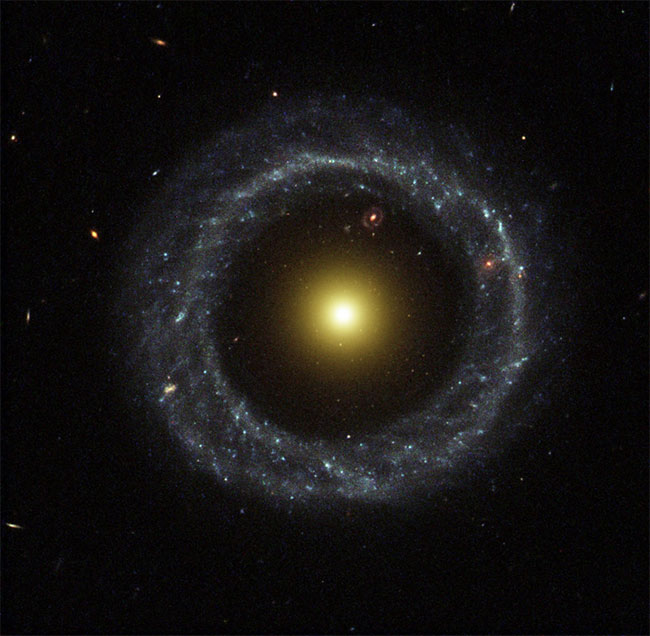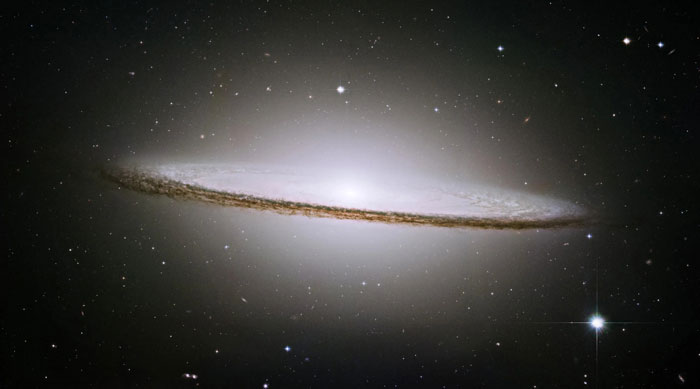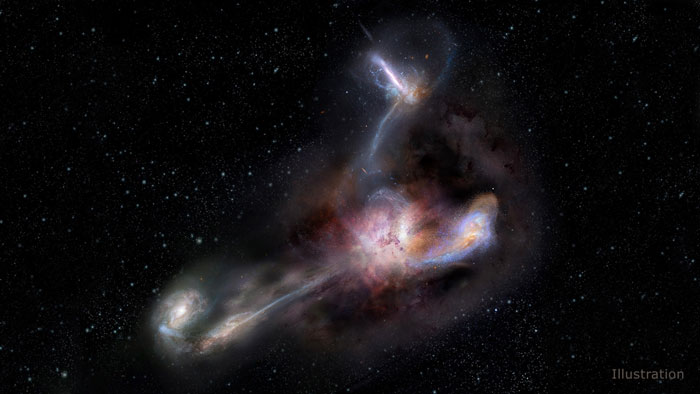The enchanting beauty of galaxies in the vast universe
The Hubble space telescope was launched into low Earth orbit in the 1990s. Since then, Hubble has helped us discover more about the vast universe with many breathtakingly beautiful galaxies.
Most galaxies are between 10 billion and 13.6 billion years old. Some of the oldest galaxies formed when the universe was only about a billion years old.

Hoag's Object is a galaxy in the constellation Serpens Caput. It has about eight billion stars and is about 120,000 light-years across.
The galaxy consists of stars, planets, and giant clouds of gas and dust, all bound together by gravity. The largest galaxy contains trillions of stars. The smallest may contain several thousand stars. Most large galaxies have black holes at their centers, some with billions of times the mass of the Milky Way's Sun.
Before the 20th century, people did not know about galaxies other than the Milky Way. Before that, astronomers considered them 'nebulae' because they looked like fuzzy clouds. Everything changed in the 1920s when astronomer Edwin Hubble judged the Andromeda 'nebula' to be a galaxy. Andromeda is the closest large galaxy to our Milky Way, and it is bright enough in the night sky to be seen with the naked eye from the Northern Hemisphere. In 1936, Hubble classified galaxies into four main types: spiral galaxies, lenticular galaxies, elliptical galaxies, and irregular galaxies.
Late March to mid-May is considered the best time of the year to see some amazing galaxies. Of course, a telescope is needed to see distant galaxies.

The Sombrero Galaxy is 28 million light years from Earth.

W2246-0526 is the brightest galaxy ever discovered.

The Whirlpool Galaxy is also known as Messier 51a (M51a) or NGC 5194 located in the constellation Canes Venatici. Whirlpool was the first galaxy to be classified as a spiral galaxy.

Phantom (Messier 74) is a spiral galaxy located in the constellation Pisces and smaller than our Milky Way.

Large Magellanic Could is a satellite galaxy of the Milky Way. It is only 160,000 light years from Earth.

The Black Eye is a relatively isolated spiral galaxy, in the constellation Coma Berenices, 17 million light-years from Earth.

Galaxy NGC 6753 is 150 million light years from Earth.

NGC 4388 is a spiral galaxy in the constellation Virgo and is 57 million light-years from Earth.

NGC 2207 and IC 2163 are a pair of spiral galaxies in the constellation Canis Major, about 80 million light-years away.

The Porpoise Galaxy (NGC 2936) is located in the constellation Hydra. NGC 2936 is interacting with the elliptical galaxy NGC 2937 located directly below it.

The Sunflower Galaxy is located in the northern constellation Canes Venatici with nearly 400 billion stars.

Andromeda is the closest large galaxy to the Milky Way. It is located about 2,480,000 light years from Earth.

IC 342 is a spiral galaxy in the constellation Camelopardalis.
- 5 great mysteries of the universe
- The enchanting beauty of the rainbow
- How many galaxies in the universe?
- Announced the largest 3D universe map ever
- Set of three galaxies in the dawn of the universe
- Decoding adds a mystery of the universe
- Universe photo: Plain on Mercury
- 5 most impressive galaxies in the universe
- The enchanting beauty of the nebula
- Discover 'living fossil' galaxies in the universe
- Detecting a group of 'ghost galaxies'
- The mystery of the dead galaxies
 The 11 most unique public toilets in the world
The 11 most unique public toilets in the world Explore the ghost town in Namibia
Explore the ghost town in Namibia Rare historical moments are 'colored', giving us a clearer view of the past
Rare historical moments are 'colored', giving us a clearer view of the past The world famous ghost ship
The world famous ghost ship